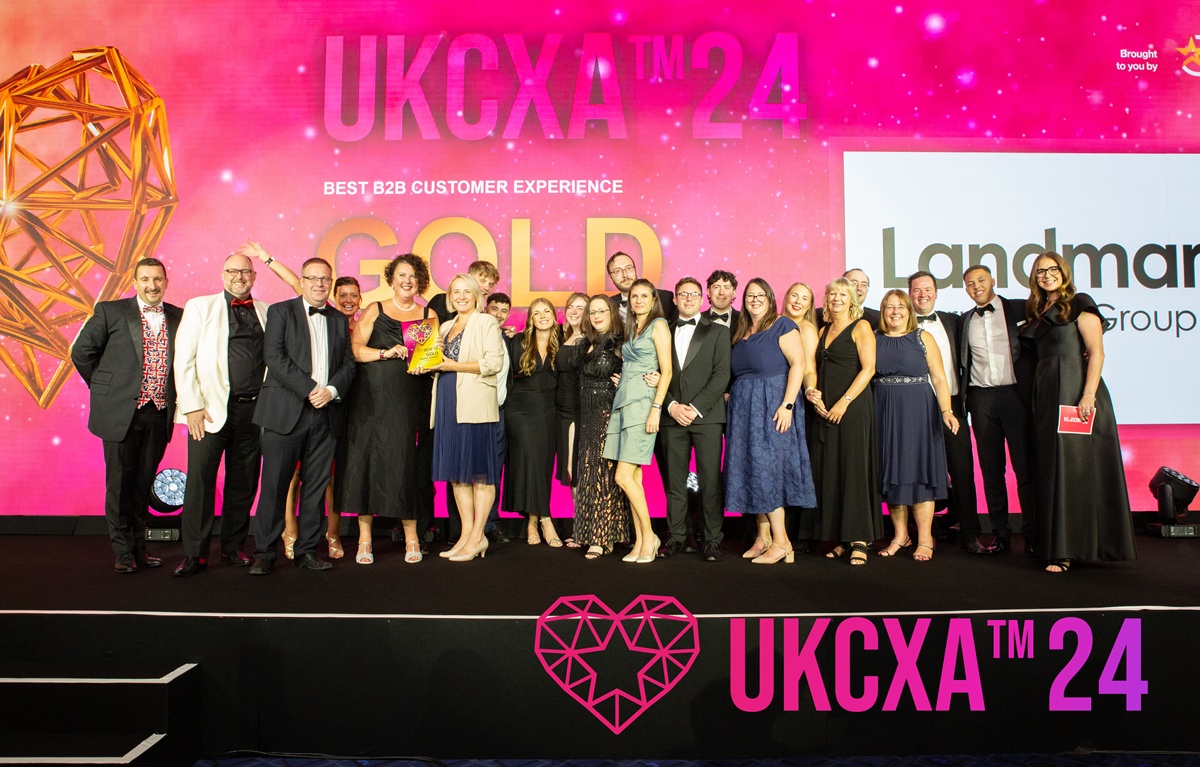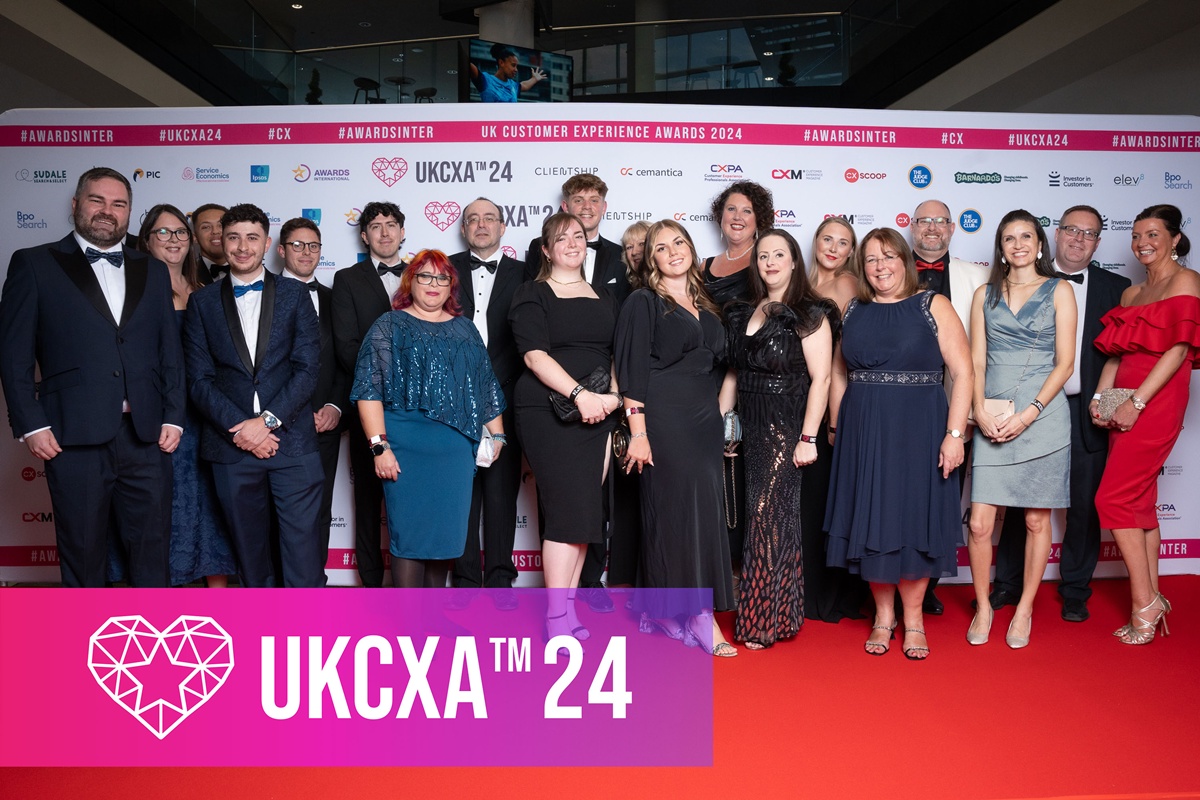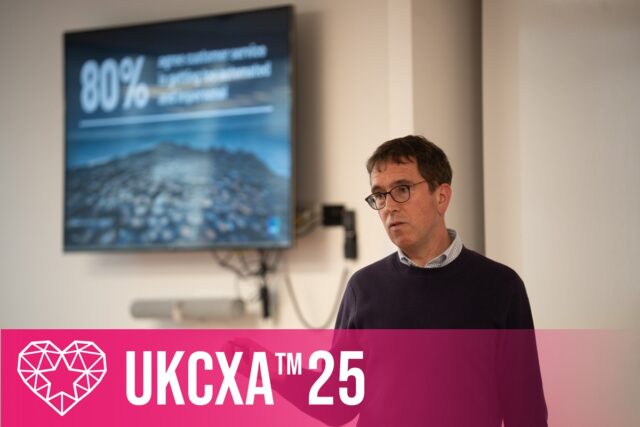May 23, 2025
How Landmark Information Group rebuilt trust, redefined CX, and won gold along the way

When Landmark Information Group, a land and property data supplier, launched its much-anticipated product upgrade six years ago, the expectation was to elevate a trusted legacy into a more modern, tech-forward future. What followed, however, was something no one anticipated—a breakdown in customer trust, a surge in complaints, and a hard lesson in the difference between good customer service and true customer experience.
“We’d always had great service,” said Helen Luty, head of customer experience at Landmark. “But what we didn’t fully appreciate until things went wrong was that customer experience isn’t just about being reactive. It’s about designing every single touchpoint, from the first conversation to how the product feels in someone’s hands.”
The product had become cumbersome and outdated. More agile and responsive competitors began luring customers away. Landmark, long a market leader, had fallen into a dangerous assumption that loyalty was guaranteed.
“We’d gotten a bit arrogant. We thought we knew what our customers needed. But they needed us to listen, not assume,” admitted Luty.
Listening in the hardest moments
Users found the upgrade clunky, confusing, and frustrating. Complaint calls soared, and many customers left. This caused Landmark to make the difficult decision to roll back the product entirely. That was also the beginning of something new.
The team launched a recovery effort grounded in humility and transparency. A new Customer Success function was born not to replace customer service, but to fill a critical gap. While account managers spoke to decision-makers, the Customer Success team spoke to everyone else, including end users, support staff, and anyone who touched the system but had never had a voice.
“We started doing exit interviews with every customer who left, not just with the leaders. We talked to the people actually using the product every day. And what we learned changed everything,” said Luty.
It turned out that many of the issues weren’t about functionality, they were about the disconnect between what was designed and what was needed. So Landmark did what many companies say they do, but few commit to: they handed design influence to the people on the front lines.
Unity in action
A project called Unity became the next turning point. It was more than just a technology fix; it was a structural shift. Customer-facing teams were involved from day one in designing the new front-end system. No more assumptions from the tech team. No more workarounds, just honest, collaborative design.
When the new system was finally launched, it was a sigh of relief.
“We didn’t get a single complaint,” Luty said. “Not one.”
That was the first time. The real proof came later, with a further upgrade to their platform called Pro Map. This time, they ran an Early Access Programme that embedded customers directly into the rollout. Users tested the product as part of their daily workflow and gave real-time feedback. They even signed off on the communication plan.

The result was a 35% drop in calls compared to the failed upgrade. More importantly, not a single customer needed to be rolled back. “It just worked. It felt like part of the job,” said Luty.
This remarkable transformation was awarded gold in the Best B2B Customer Experience category at the UK Customer Experience Awards 2024, along with a bronze in Employee-Driven CX.
From supplier to partner
Today, Landmark doesn’t talk about customers, they talk about partnerships. Their Customer Success and Consultancy teams work hand-in-hand to support usage and better understand entire business ecosystems. They ask what happens before a client uses the product, and what happens after. They offer training, listen proactively, and solve problems before they escalate.
The teams meet regularly, share insights, and maintain a single, unified view of the customer.
“We’ve made communication a habit and now, everyone’s in the loop,” added Luty.
Leading by Example
In 2023, Helen Luty was named CX Leader of the Year at the UK Customer Experience Awards. To her, the award was never the point.
“What meant the most,” she said, “was that it was my team who nominated me. That’s what made it special.”
As for what comes next, Luty says: “You just keep going. You reach one milestone, and you ask, how do we make it even better?”
The transformation wasn’t just a success story for Landmark Information Group. It was a reckoning, a reinvention, and a return to something simple: that trust is earned not through perfection, but through listening, learning, and showing up when it matters most.
Planning to launch your own awards? Power your programme with AwardMost, the all-in-one platform built for awards organisers.



